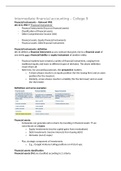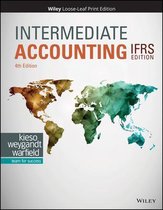Class notes
Lecture notes Intermediate Financial Accounting - Part 2
- Course
- Institution
- Book
This document contains all lecture notes from lectures 9 to 12 from the 2021/2022 academic year. In addition, the document contains several examples that also serve as examples for the exam questions. The examples helped me understand and apply the theory.
[Show more]




